Secret services
Politics
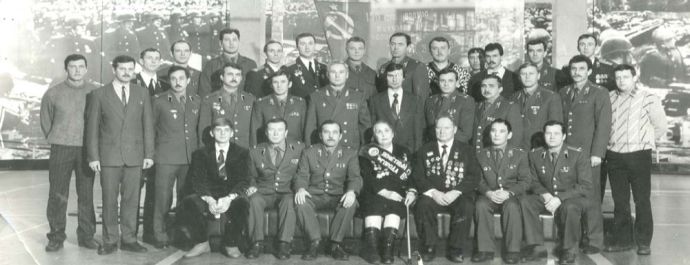
“We are the shield and the sword of the Party.” The slogan of the KGB (490,000 agents in 1989, including 217,000 border guards), also applied to East Germany’s Stasi (95,000 agents plus 174,000 informers) and Rumania’s Securitate (38,000 men, 450,000 informers – of which only 13,000 were active). These bodies were totally committed to the Communist leadership, and were in fact above the law. Any tactics (spying, blackmail, secret arrests and detention, torture, executions) were accepted to defend the Party’s interests. Historically, these political police forces had copied the Soviet model (first the Cheka, then the GPU, NKVD and finally the KGB), which had itself been influenced by the Okhrana, the Tsarist police force. Almost as soon as he came to power, Lenin had ordered State Security to “declare war on the counter-revolutionary rogues,” and “neutralize the enemies of the people.” The security force became a State within the State, with its own schools, and sports clubs; it was highly specialized, and in charge of both domestic and international espionage. Yuri Andropov, who was responsible for the repression in Hungary in 1956, and became head of the KGB in 1967, made it to the pinnacle of Soviet power by 1982. But unlike the 1930s in the USSR, and the 50s and 60s in the Eastern bloc, acceptance of the East-West division, the system’s power, and the relative improvement in economic conditions meant that by the 70s, a good percentage of the population accepted or sincerely believed in the Communist system. The times didn’t call for Stalin’s terror, or massive liquidation of elites. Tighter border control prevented people from leaving or outside information from entering (except in East Germany, which was exposed to West German TV; Radio Free Europe and the BBC were partly scrambled). So political opposition was found on the margins; youth, the Church, intellectuals and artists. Of course, there was the Cold War with western services, and the famous exchanges of spies caught at Potsdam, at Glienicke Bridge. But the political police’s main goal was to control society by infiltrating it at every level, to keep protest from getting publicly expressed. The degree of violence varied from one country to another, psychological and social pressure were the preferred methods: provocation, disinformation, defamation, losing one’s job, one’s children being excluded from university, psychiatric internment. Most of the camps were closed in the 50s, but “secret” prisons subsisted (Lubyanka in Moscow, Hohenschönhausen in Berlin). “Informal” informers reporting to specific agents threw an inexpensive net over all of society, encouraging self-censorship and a climate of fear. Right up to 1989m the KGB continued to coordinate and lord it over its “brother” services. Under Gorbachev, it even tried to push some Eastern-bloc countries towards reform - more or less successfully. When Communism collapsed, much of the people’s anger was aimed at these political police forces. Some states (Germany, Poland, Czech Republic) made a point of opening archives and exposing the workings of these services (“lustration”), while others preferred to veil this painful past in a certain level of secrecy (Russia, Hungary, Rumania).
Archive
Disintegrating the enemy
Each political police force had its own vocabulary. In this "directive" from 1976, the Stasi explains the stakes of "zersetzen", a key element in both what they did and how they thought: disintegrate, dissolve, decompose.
country: German Democratic Republic / year:
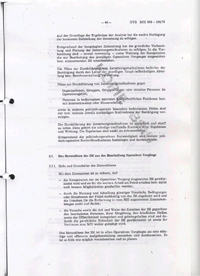
Each political police force had its own vocabulary. In this "directive" from 1976, the Stasi explains the stakes of "zersetzen", a key element in both what they did and how they thought: disintegrate, dissolve, decompose. The goal was literally to "disintegrate negative-enemy elements" that could harm the Party’s supremacy. Any and all means were allowed, including resorting to the regular police, the workplace, "informal collaborators" in the person’s entourage, etc. The goal: use contradictions amongst opponents of the State themselves to "divide, paralyze, disorganize and isolate," to keep them from acting effectively. Major actions had to be directly approved by the Minister of the Stasi, Erich Mielke. Everything had to be done "quickly and coherently," and be well documented. This famous directive from the Council of Ministers was classified Top Secret by Mielke, just 30 copies of it were made.
Sword and shield of the Party
The insignia of the KGB (Committee for State Security in the USSR) neatly sums up the ideology of the key institution for maintaining Soviet power: being the shield and the sword of the Party.
country: Soviet Union / year:
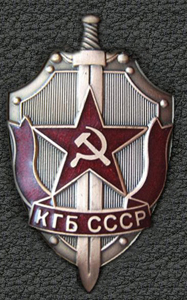
The insignia of the KGB (Committee for State Security in the USSR) neatly sums up the ideology of the key institution for maintaining Soviet power: being the shield and the sword of the Party. The shield to defend the revolution, the sword to destroy its enemies. The "Chekists", as KGB agents called each other in honor of the first Soviet police force, the Cheka, were a separate caste, better trained, better informed, and totally devoted to the center. In 1983, Time magazine described the KGB as the best foreign espionage – i.e. for espionage (first directorate) and counter-espionage (2nd and 3rd directorates) activities – organization in the world. But Yuri Andropov, appointed KGB head in 1967 and secretary general of the USSR en 1982, was most concerned with the fight against domestic "ideological subversion" (5th and 7th directorates).
The fall of Felix Dzierzynski
Lubyanka Square, Moscow, the statue of "Iron Felix," a Polish Bolshevik, founder of the Cheka and an implacable inquisitor, was still the symbol of the KGB’s huge, arbitrary power.
country: Soviet Union / year:
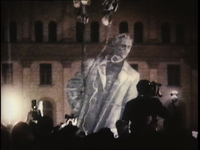
Lubyanka Square, Moscow, the statue of "Iron Felix," a Polish Bolshevik, founder of the Cheka and an implacable inquisitor, was still the symbol of the KGB’s huge, arbitrary power. Since the birth of the Soviet political police, Lubyanka, near Red Square in Moscow, is the incarnation of State-sanctioned terror. The big yellow building that houses the KGB (and housed its precursors, the Cheka, the GPU, the MVD and the NKVD) hides in its basement countless cells where "enemies of the people" suffered horrific abominations – rumors having almost as dissuasive an effect as reality. Stalin even had the churches on the square around the building razed to highlight it. On August 22, 1991, the statue representing the head of the Cheka was pulled down by the angry crowd after the failed coup against Gorbachev. The work of one of the greatest artists of Socialist realism, Eugueny Vuchetich, it has since been relocated along with other dethroned fallen icons to Moscow’s Arts Park. But thanks to the siloviki’s (secret-servicemen’s) return to power under Putin, there has been talk of putting the statue of Felix the Red back on its original pedestal.
The Bridge of Spies
From 1962 to 1986, three widely publicized spy exchanges took place on Glienicke Bridge, over the Havel, between Berlin and Potsdam, south-west of the East German capital.
country: German Democratic Republic / year:
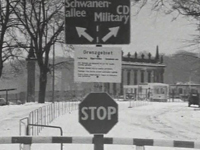
From 1962 to 1986, three widely publicized spy exchanges took place on Glienicke Bridge, over the Havel, between Berlin and Potsdam, south-west of the East German capital. For this reason, the bridge – which was strategically located at the ‘border’ between the American and the Soviet sectors of Berlin – came to be known as the Bridge of Spies. The KGB maintained on observation post nearby. In 1962, Gary Powers, the pilot of an American U2 spy-plane shot down over the USSR was exchanged for an American Communist spy. Then in 1985, 23 East German political prisoners were exchanged for four spies held in the United States. Finally, a year later, in February, 1986, five KGB agents (two Czechs, a Russian computer specialist, a Pole and an East German) were swapped for the refusenik Natan Chtaransky and four Western agents. The Cold War was also an intelligence war; the information gathered being used to justify – on both sides – the necessity of their own armament in case "hot" war were to break out as well as their own counter-espionage. Finding and analyzing information about the "other side," had vital stakes. Yet this somewhat paranoid world view didn’t provide a clear understanding of the societies’ structural movements.
Follow, eavesdrop and crush the "enemies of the people"
Tailing huge numbers of people, eavesdropping and wire-tapping foreigners’ hotel rooms and even in dissidents’ eaves, mail confiscated both randomly and in a targeted manner.
country: Czechoslovakia / year:
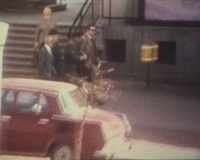
Tailing huge numbers of people, eavesdropping and wire-tapping foreigners’ hotel rooms and even in dissidents’ eaves, mail confiscated both randomly and in a targeted manner. Czechoslovak secret services, StB, used any and every possible human and technological means at their disposal for keeping track of "counter-revolutionary elements" within their own population. Agents knew how to hang wallpaper to hide microphones. Fifty full-time translators were employed to decrypt the 800 wire-tapped phone calls and 170,000 intercepted letters a day. This effort supplied evidence that could be used in future trials of "class enemies." Like all Soviet police forces, the StB copied the KGB’s methods. But each one had its own specificities and specialties like East Germany’s spy lovers (a.k.a. "Romeos") and spy-lover-secretaries for high-ranking officials and "Bulgarian umbrellas" dipped in curare to assassinate exiled political opponents.
Persecution of the Polish student movement
The Polish political police (SB) had its work cut out for it in dealing with the Catholic Church, the only one in Eastern Europe, and the union Solidarnosc.
country: People's Republic of Poland / year:
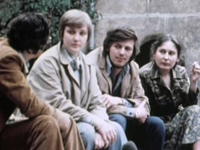
The Polish political police (SB) had its work cut out for it in dealing with the Catholic Church, the only one in Eastern Europe, and the union Solidarnosc. As we can see in this interview with young people who supported the newly formed union, intimidation, including physical, was a common-place method for the Polish "Chekists." The SB also managed to infiltrate the Church. A certain number of priests were listed as collaborators by the National Memory Institute (IPN), which houses the secret police archives from 1944 to 1989.